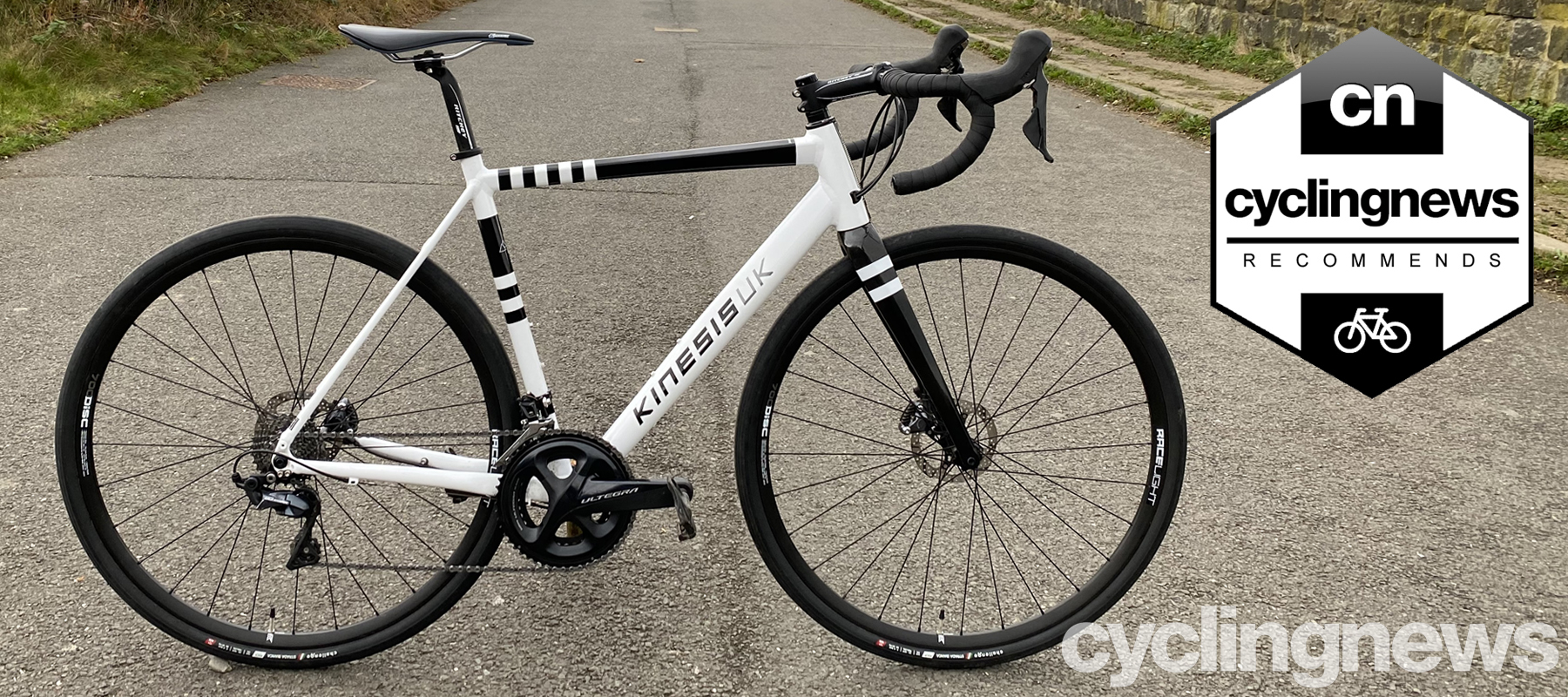Cyclingnews Verdict
Not just a versatile, practical all-rounder but a properly charismatic and responsive ride that’ll outperform much more expensive carbon and titanium bikes in terms of miles and smiles
Pros
- +
Charismatically lively ride feel
- +
Confident handling
- +
Big tyre friendly
- +
Decent weight
- +
Neat configurable cable routing
- +
Mudguard mounts
- +
Good price
Cons
- -
No rack mounts if you’re a fan of panniers
You can trust Cyclingnews
Kinesis has stuck to alloy and titanium frames while the vast majority of brands have switched primarily to carbon fibre. They also co-sponsor the Transcontinental Race across Europe. The two themes come together in the Scandium alloy Race The Distance (RTD) frameset. The result is a remarkably cultured, responsive, enjoyable and therefore versatile all-round road bike at a great price.
Design and geometry
Kinesis has a long history of evolving and developing the aluminium alloy art and there’s a lot of that in the RTD. While most of the best aluminium road bike frames use Hydroforming (high-pressure oil pressing tubes into shaping moulds), Kinesis use Super Plastic forming (high-temperature gas slowly pressing tubes into shaping moulds). According to Kinesis that lets them make more complex, thinner tube forms to create lighter, stronger frames. That shaping includes a triangular to flattened down tube faceted and tapered top tube, flattened seat stays and curved and tapered chainstays.
Kinesis has also used the hardening element Scandium in the alloy for the RTD which was briefly very popular in the late 90s but very rare today.
There are some clever design touches, too. The internal cable routing inserts into the front of the head tube. That means the full carbon Columbus Futura fork steerer has to be narrowed to give plenty of cable space and it also gets metal rub protectors in case they do contact. The gain - besides no paint rub on the outside of the head tube - is a down tube without exit and entry holes which again means it can be made thinner-walled and lighter. It removes the chance of cable conflict with frame bags too and switchable inserts let you set up the RTD frame analogue, Di2 wired or wireless without leaving holes. The front mech mount is a bolt-on clamp too so you can set it up clean for a single chainring if you prefer.
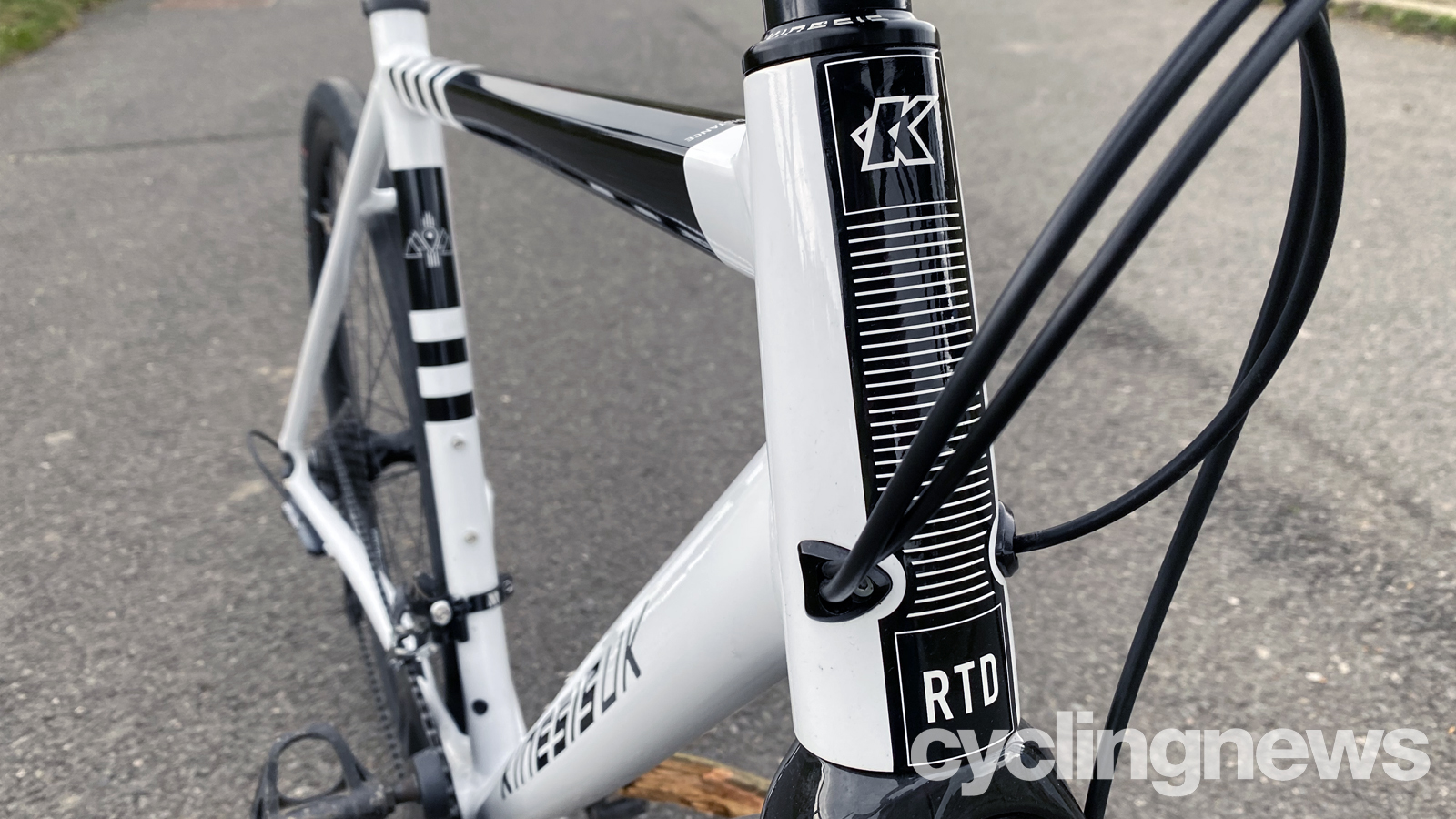
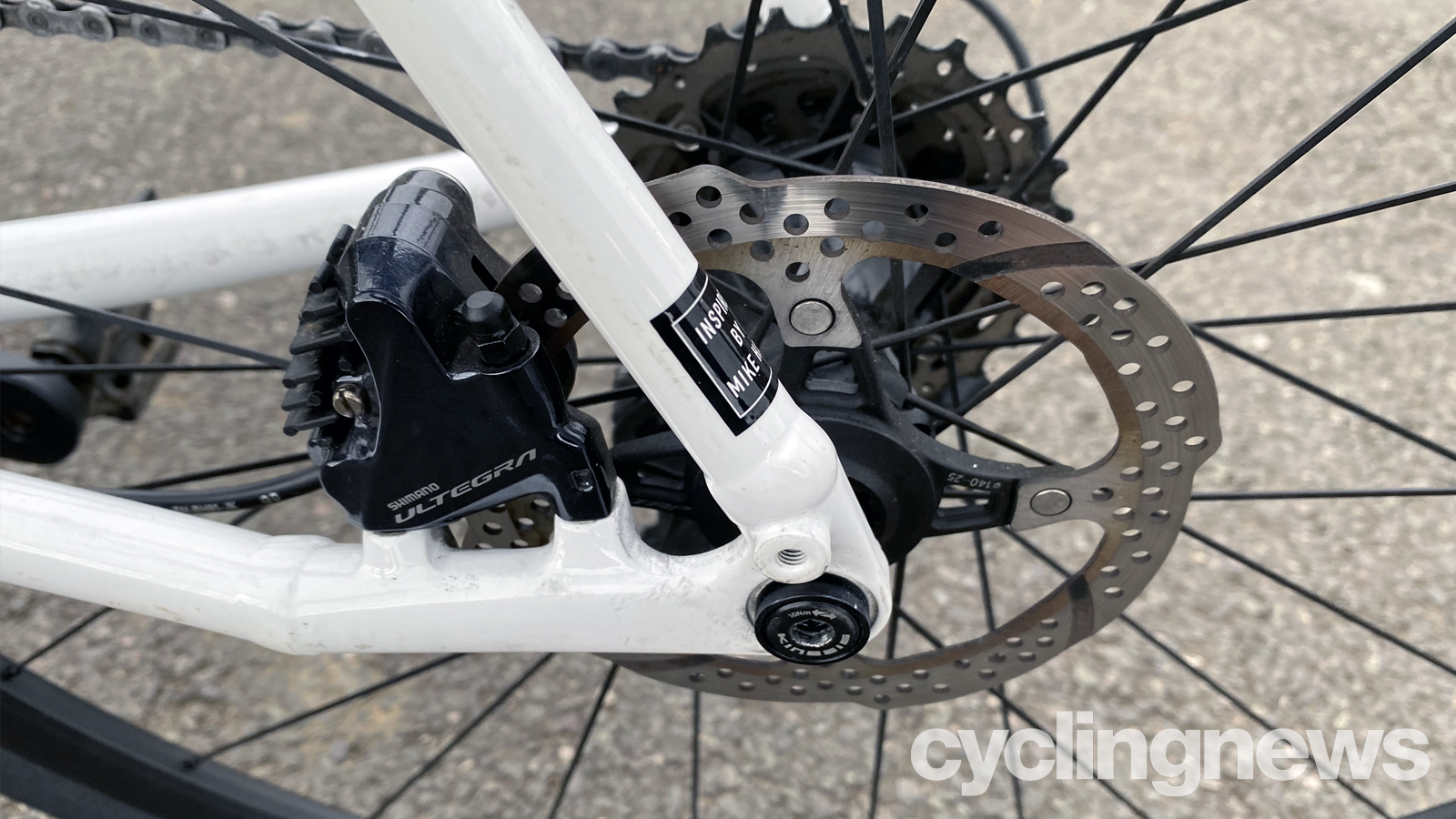
The RTD also has three bottle mounts, mudguard mounts, a threaded bottom bracket, flat-mount disc brake fixtures and GW Engineering 12mm through axles with removable levers. There aren’t any rack mounts though as it’s designed for bikepacking bags, not panniers. Despite all the practical touches, the tubing tech makes it the lightest Kinesis alloy frame at a claimed 1400g for the 51cm model. That’s not as light as some alloy race frames but close to the weight of many carbon fibre frames and lighter than many titanium frames that cost considerably more. You still get a five year warranty too.
Geometry is designed for confident, relaxed riding and loaded stability with a 71º head angle on most of the seven sizes, slackening more on the smallest frame to reduce toe overlap and steeper on the larger sizes. The seat angle goes the other way with the majority of frames at 73.3-degrees with 74-degrees on the 48cm frame and 73-degrees on the 63cm. 420mm chainstays mean there’s space for 36mm tyres (Kinesis say 34mm) or 30mm tyres with mudguards fitted. The head tubes of each frame are relatively long (our 54cm had a 160mm head tube) for a more comfortable upright position on longer rides.
The two bold monochrome paint options and details are inspired by the work that endurance event legend Mike Hall did on the ATR gravel bike before he was killed by a motorist while racing in Australia.
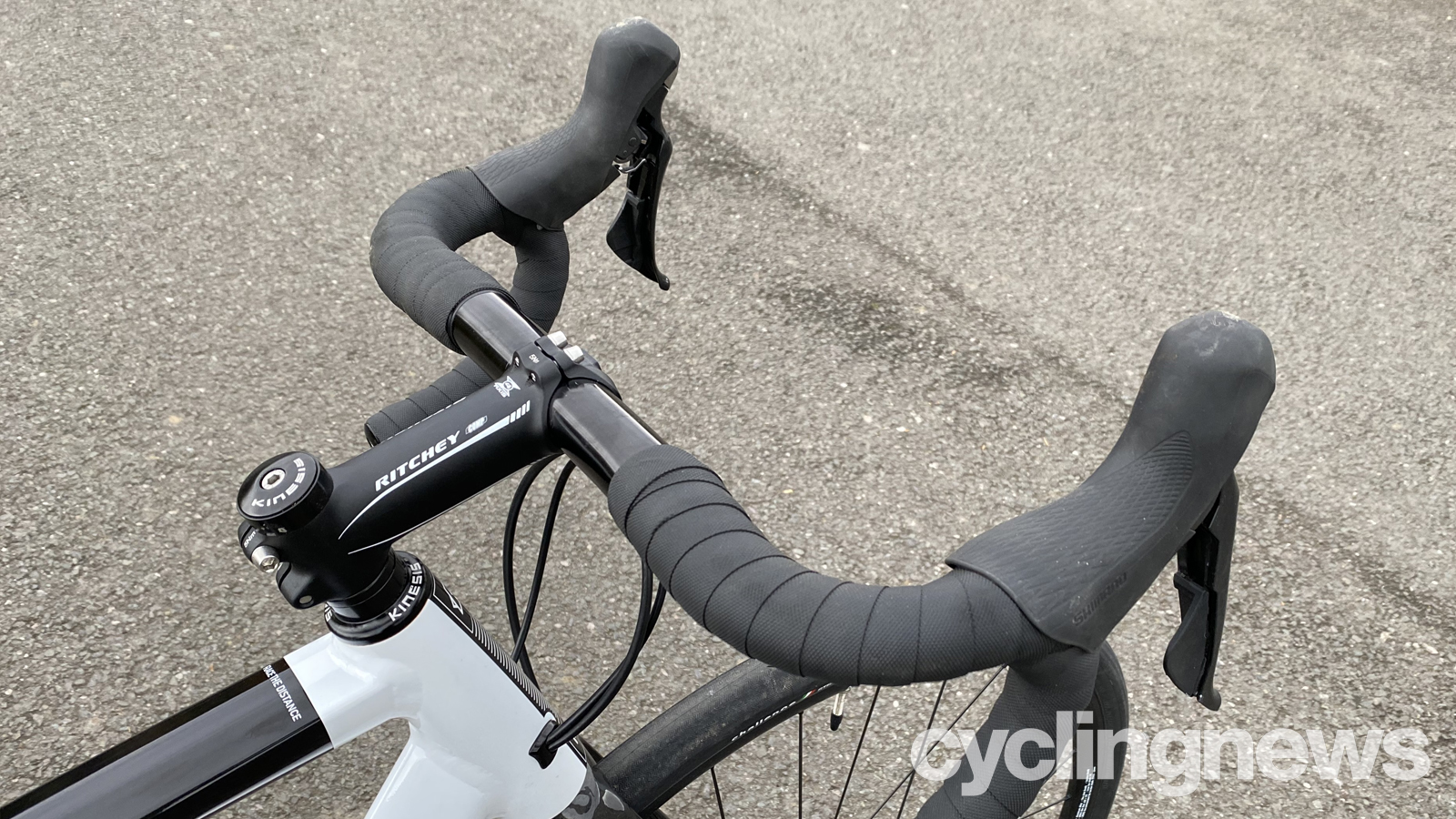
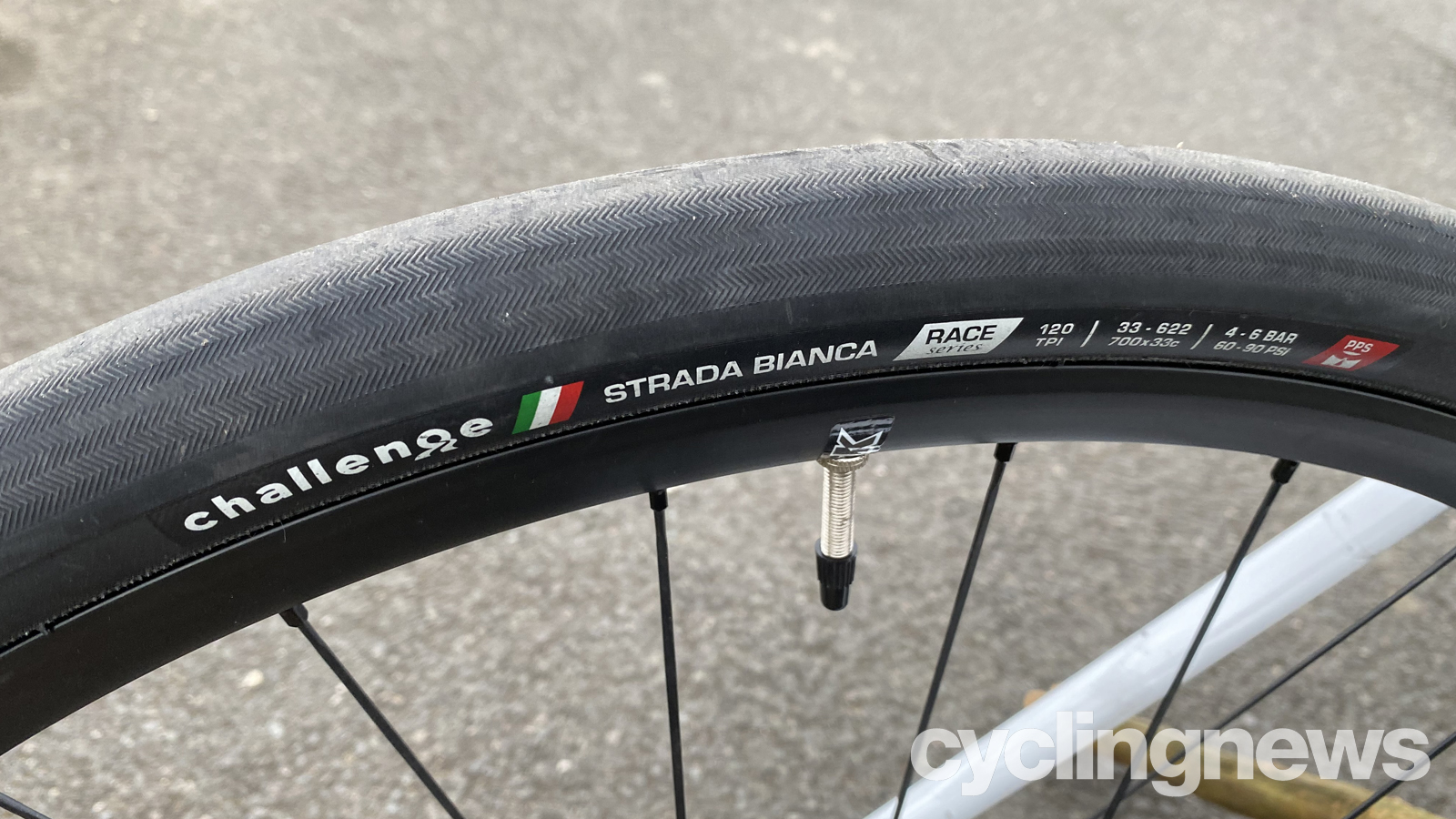
Components and build
Kinesis sells the RTD as a frame and fork with axles and headset. Our test bike was completed with Shimano Ultegra, Kinesis Racelight Disc V2 wheels shod with Challenge Strada Bianca 33mm tyres, Ritchey alloy finishing kit and a Kinesis saddle. All decent equipment for rough road riding but you could easily build it up significantly lighter than the nearly 9kg of our 54cm test bike.
Ride, handling and performance
Weight certainly isn’t the first impression of the RTD though, in fact, the opposite. Press the pedals with purpose and it responds with a surge of acceleration that you can follow up a long way through the gears before it starts to level off. That’s even more notable as our sample came with a full-size road chainset rather than a compact and the Challenge tyres blow up to 35mm even at 50psi. The heavily worked frame and short stays still deliver a rewarding turn of speed on climbs whether you’re charging out of the saddle or sat and spinning. Unsurprisingly the eager feel was even more obvious when we switched to lightweight carbon wheels and 28mm tyres and it had no problem hanging with road race bikes on fast training rides. The smaller tyre volume also proved it was the frame and fork, not just the fat rubber that gives the RTD it’s smooth and forgivingly flowing ride character. We’re not just talking in comparison to other alloy frames either, the tube work in the Kinesis makes it competitive with naturally sprung titanium and steel frames and a lot more engaging and dynamic than a lot of price point carbon options.
As supplied the big tyres give even more buoyancy on broken roads and bridleways and the Columbus fork also melts away a lot of roughness when you’re too tired to dodge every hole, or there just isn’t that option. The lack of rattle and consistent connection add to the confidence of the relaxed head angle when it comes to descending too, so even in normally nerve-wracking greasy/wet leaf road situations, we weren’t as worried as normal.
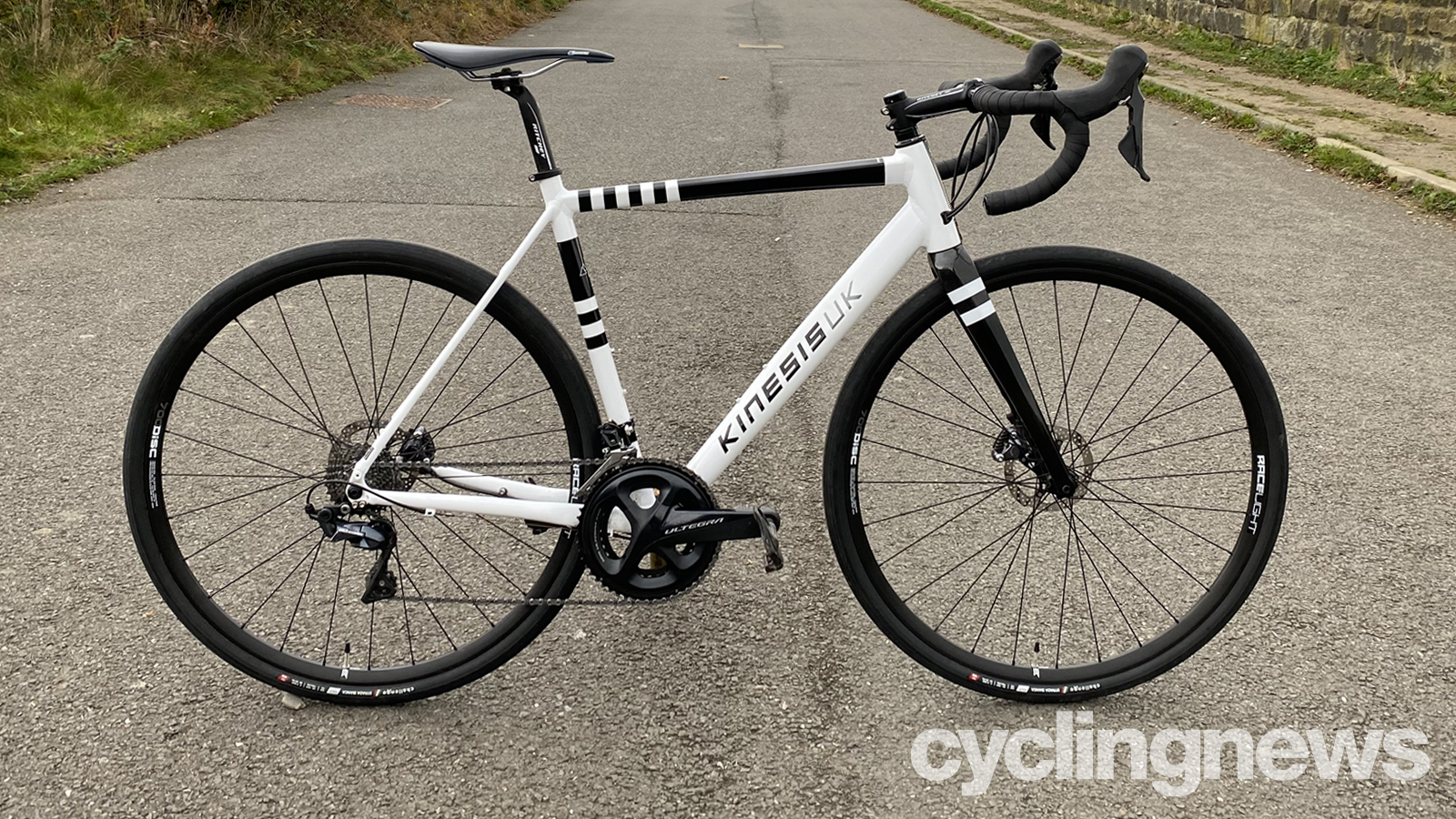
Verdict
The RTD does a great job of its named intention as a stable, smooth, fat-tyre friendly machine that makes long distances easy. It’s also loaded with practical features for a really neat result however you want to build it. Where it really surprises though is in the lively, sprung responsiveness that so many carbon fibre bikes lack. Add an affordable price and this is a really charismatic and enjoyable bike that’ll delight on day-to-day commuting, fast training rides and weekend epics.
Tech specs: Kinesis RTD frameset
- RRP: £850
- Frame: Kinesis RTD frameset
- Size: 54cm
- Groupset: Shimano Ultegra R8000
- Crankset: Shimano Ultegra 52-36T
- Wheels: Kinesis Racelight Disc V2
- Tyres: Challenge Strada Bianca 33mm
- Brakes: Shimano Ultegra hydraulic discs with 160mm rotors
- Bar/stem: Ritchey Comp Evocurve drop bar
- Seatpost: Ritchey Comp 27.2mm seat post
- Saddle: Kinesis
- Weight: 8.8kg
